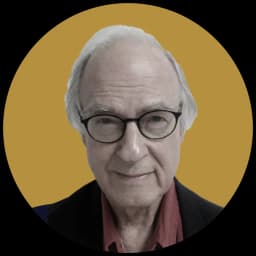Carter Will Be Remembered for His Betrayal of Free China
It was met with stunning disillusion in Asia.

President Carter’s decision in December 1978 to recognize Beijing as the capital of China, for which he’ll be remembered, was a shock to Taiwanese mesmerized into believing Washington would never forsake them. The Americans had treated Taipei as the rightful capital of all China ever since Generalissimo Chiang Kai-shek’s defeated forces had fled to the island province as Mao’s Red Army stormed to victory in 1949.
Nearly 30 years later, I was at Tokyo watching the news on TV as protesters at Taipei scattered peanuts in front of the American embassy, soon to become a non-diplomatic “institute.” Who would have believed that Washington could go back on its promises scarcely three years after the Communist victory in Vietnam?
The disillusionment of the shift in American policy was stunning. “When then-US president Dwight D. Eisenhower visited Taipei in 1960, thousands cheered amid a sea of American flags,” the South China Morning Post in Hong Kong, then a British colony, reminisced. Ike “addressed a crowd of half a million, pledging that America would support Taiwan over the communist-run People’s Republic of China.”
To the people of Taiwan, population about 24 million compared to the 1.4 billion living on the mainland, 100 miles away across the Taiwan Strait, the shift in recognition was a dastardly betrayal. As the Morning Post explained, “Angry protesters stomped on peanuts – since Carter had a peanut farm before becoming president – and waved placards calling Carter all kinds of names.”
The transfer of diplomatic recognition reflected the deepest sentiments of a president who had shown his inclinations even before his election in 1975 after the humiliation of the defeat of the South Vietnamese. Carter, brimming with leftist zeal over the withdrawal of American forces from Vietnam in 1973, let it be known before the election that he wanted to pull American forces from South Korea too.
No sooner had Carter been inaugurated in January 1977 than he sought to turn this wild idea into action. President Nixon had already withdrawn an entire division from South Korea, reducing the number of American troops to about 40,000, but Carter, oblivious to constant threats from North Korea’s leader Kim Il-sung, proposed a phased withdrawal down to nearly zero.
That proposal set off alarm bells in the State Department and the Pentagon — and in South Korea too. Among the casualties was the chief of staff of the U.S. Forces Korea, Major General John Singlaub, who angered Carter for publicly opposing the drawdown. Summoned to Washington to see the president personally, Singlaub was dismissed for “public statements” deemed “inconsistent with announced national security policy.”
Never mind. Carter had to abandon the foolish idea of troop withdrawal, but he wasn’t done showing his leftist stripes on Korea. In June 1994, as war clouds hung over the Korean peninsula, Jimmy and Rosalyn Carter, as private citizens, went to Pyongyang. Carter chatted with Kim Il-sung, 84, on a boat in the Daedong River.
I saw Carter at a press conference at Seoul before he left for Pyongyang by road across the Demilitarized Zone, and I was among three or four reporters with whom he chatted at the American ambassador’s residence after he got back. He had an attitude of studied calm, no loud words, as he said, in all false modesty, that Kim had “agreed” he stop developing a nuclear warhead while Washington gave up sanctions.
After Kim died a month later, the crisis intensified and then faded with the signing of the “framework agreement” at Geneva in October. The International Atomic Energy Agency would monitor the reactor, making sure it was not working. North Korea would get two light-water energy reactors made in South Korea, funded largely by South Korea and Japan, while America provided heavy oil for the North’s power plants.
The whole deal flew apart, of course, after North Korea was exposed in 2002 to be secretly producing highly enriched uranium. Washington cut off the heavy oil shipments, and North Korea withdrew from the nuclear non-proliferation treaty.
Carter had not given up on North Korea. He returned to Pyongyang in August 2010, at North Korea’s “invitation,” as he put it, to pick up an American, Aijalon Gomes, detained there after entering from China. Then, in May 2011, he visited North Korea as head of a delegation that included the former presidents of Ireland and Finland and the former prime minister of Norway. The purpose: “to assure the delivery of donated food directly to needy people.”
Just how this peace lover could be sure of anything about the North was not stated. All that was obvious was that Carter’s attempt at bringing peace to the Korean peninsula, as I had seen and heard him at Seoul, was as benighted as throwing the Taiwanese overboard while appeasing the Communists at Beijing.
____________
Correction: 1977 was the year of President Carter’s inauguration. The year was given incorrectly in the bulldog.

